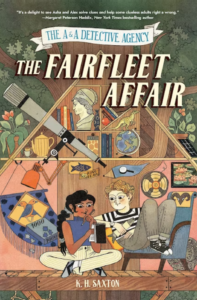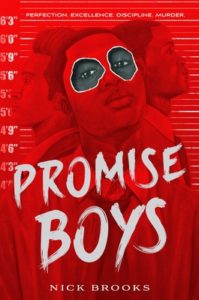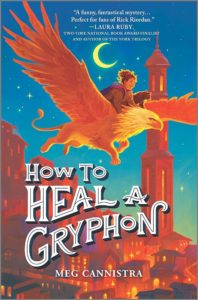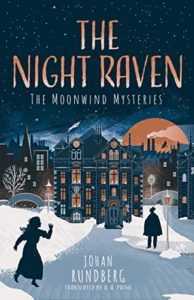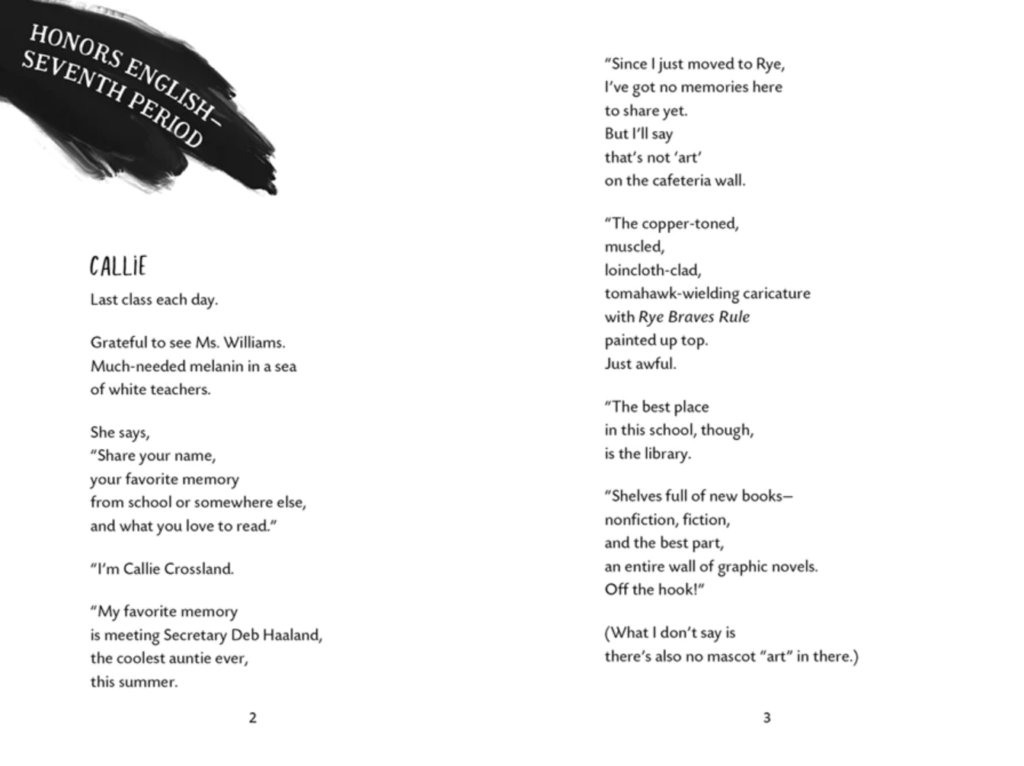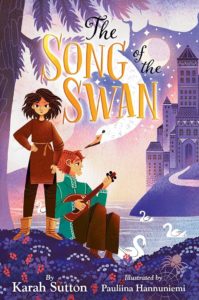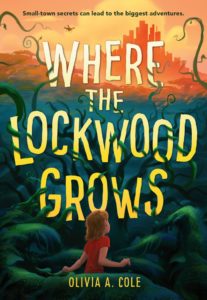“Museum Mysteries”
In The A&A Detective Agency: The Fairfleet Affair, 12-year-old detectives Alex and Asha get their first big case when Dr. Alistair Fairfleet disappears under suspicious circumstances. Dr. Fairfleet, the agency’s primary benefactor, is also the chairman of the Fairfleet Institute and its world-famous museums. As Asha and Alex follow the trail of clues and puzzles that their mentor left behind, they must explore the four main branches of the Institute: the Fairfleet Museum of Art, the Fairfleet Historical Archives, the Fairfleet Center for the Performing Arts, and the Fairfleet Museum of Natural History. These centers of history and culture provide the sleuths with plenty of topics to research and mysteries to investigate, and they present a similar entry point for young readers hoping to learn and engage more deeply with the text.
The Fairfleet Museum of Art
The many masterpieces of the art museum are curated by the equally impressive Dr. Prudence Ito. Admiring the artwork leads Alex and Asha to some important clues as well as more questions. What do an ancient Greek bust of Pallas Athena and a painting of a frog by an elusive French artist have in common? Perhaps that there is more to each of their stories than meets the eye…
Class Activity: You don’t need to travel to Northbrook to give students access to great artwork. Visit a local gallery, explore a student art exhibit at your school, or browse the online collection of a well-known museum like the Metropolitan Museum of Art. Let students pick a piece of artwork for a creative writing exercise, then ask them to write a short fictional narrative inspired by their selection. Give them time to observe the piece, brainstorm, freewrite, and share.
- Does your piece suggest characters and a conflict?
- Does it make you think of a particular setting, theme, or mood? Feel free to embrace abstract or creative connections.
- Can you imagine a story in which the piece of art itself shows up as a key detail, plot point, or symbol?
The Fairfleet Historical Archives
The archives house a wide variety of documents and primary sources related to the history of Northbrook, the Fairfleet family, and the other branches of the Institute. A young archivist named Minnie Mayflower helps the sleuths piece together evidence from the past. As Asha and Alex soon discover, good research is critical to good detective work.
Class Activity: Consider what archival materials exist at your school and what might be available for classroom use—an old yearbook or student newspaper, for example. Allow students to peruse one such source and choose a photograph, article, or something else that interests them for further reflection.
- What do you notice? What details stand out to you?
- Can you make any inferences about this moment in the past based on your observations?
- How does the experience of students at the time seem similar to or different from your own?
- If you could talk to these students from days gone by, what would you ask them?
The Fairfleet Center for the Performing Arts
Quentin Carlisle, the charismatic but conniving artistic director of the FCPA, tests the detectives’ patience as well as their theatrical knowledge as he prepares for a production of King Lear and gives Alex and Asha some additional insight into the Shakespeare-themed clues of the case.
Class Activity: Have students think of a book or a play that they have both read and seen in performance. For many students, this might be a book that was adapted into a movie. Students should spend a few minutes jotting down notes on what they remember about each version and then address the questions below.
- How was reading this story different from watching it? Which experience did you prefer and why?
- What changes were made between the text and the performance? Were these changes necessary or effective?
- If you were to direct your own performance, what choices would you make? Who would you cast in important roles? What costumes, props, or set details would help you realize your vision?
The Fairfleet Museum of Natural History
The natural history museum and its serious executive curator, Dr. John Wright, are at the heart of The Fairfleet Affair. In the Hall of Cultural Artifacts, objects like the Nabataean Zodiac fascinate Asha and Alex and lead them to contemplate questions about museum curation, provenance, and cultural heritage.
Class Activity: Students should pick an object from home that is especially meaningful to them and then imagine that a museum curator 200 years in the future is trying to decide how best to display or share this object with the public.
- Where and how should the object be displayed? What other items or artifacts might be nearby? What would you call the exhibit?
- What information should be included on the museum placard?
- Does the object have personal, family, or cultural significance for you? Do you think that the museum can honor this special meaning? If so, how? If not, what fate would you prefer for the object?
Published September 19, 2023 by Union Square & Co.
About the Book: Follow clues, solve puzzles, crack the code… find the missing millionaire.
The celebrated museums of the Fairfleet Institute are known for curating the mysteries of humanity. But they don’t solve mysteries. Luckily, twelve-year-old friends Alex Foster and Asha Singh of the A&A Detective Agency do. Or they will . . . once they get a real case to test their skills as sleuths.
When Dr. Alistair Fairfleet, the institute’s eccentric chairman, disappears on the first day of Alex and Asha’s summer vacation, they receive a letter written by the missing millionaire himself inviting them to a game involving complicated clues and puzzles. It is just the sort of case they’ve been waiting to tackle. But nothing in the Fairfleet case has a simple solution. As the kids track down clues, they uncover art forgeries, archaeological crimes, and Fairfleet family secrets. All of this tests their partnership and forces them to confront the complicated legacies of the people and places they admire most.
Praise for the Book:
““[T]he intricate plot—jam-packed with brain teasers, convoluted twists, and red herrings—keeps readers in suspense while neatly paving the way for a sequel in Saxton’s series-starting debut.” —Publishers Weekly
“A complex, cinematic, and eclectic page-turner.” – Kirkus
“Saxton reveals a knack for constructing a mystery, planting baffling clues, and creating interesting characters of varied ages Tension rises and falls, but the pace of the narrative never falters, and readers will enjoy seeing the puzzle pieces fall into place during the satisfying conclusion. A smart, involving first novel.”—Booklist
“Young readers will find The Fairfleet Affair a solid introduction to the genre and will, most likely, look forward to forthcoming Northbrook crimes the A&A duo can solve.” —New York Journal of Books
“Full of clues and puzzle pieces to ponder, this complicated mystery will keep readers guessing all the way until the end.”—School Library Journal / Teen Librarian Toolbox
About the Author: K. H. Saxton is an English teacher and boarding school administrator in Connecticut. The A&A Detective Agency: The Fairfleet Affair is her first novel.
Thank you, K.H., for these amazing activities that tie into your book!
